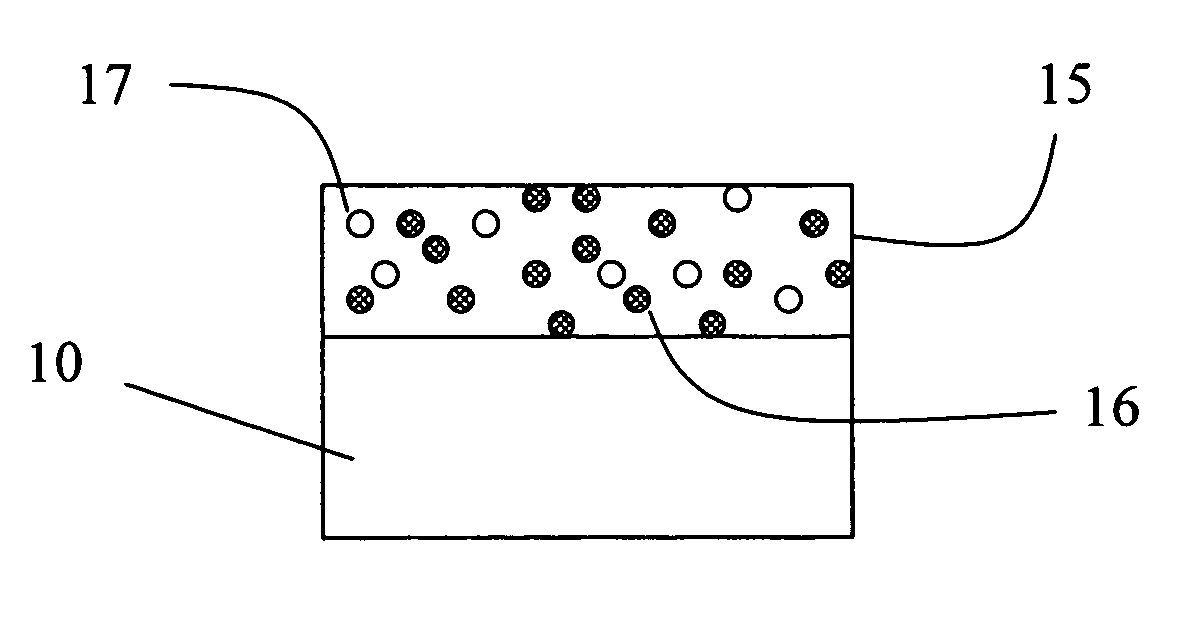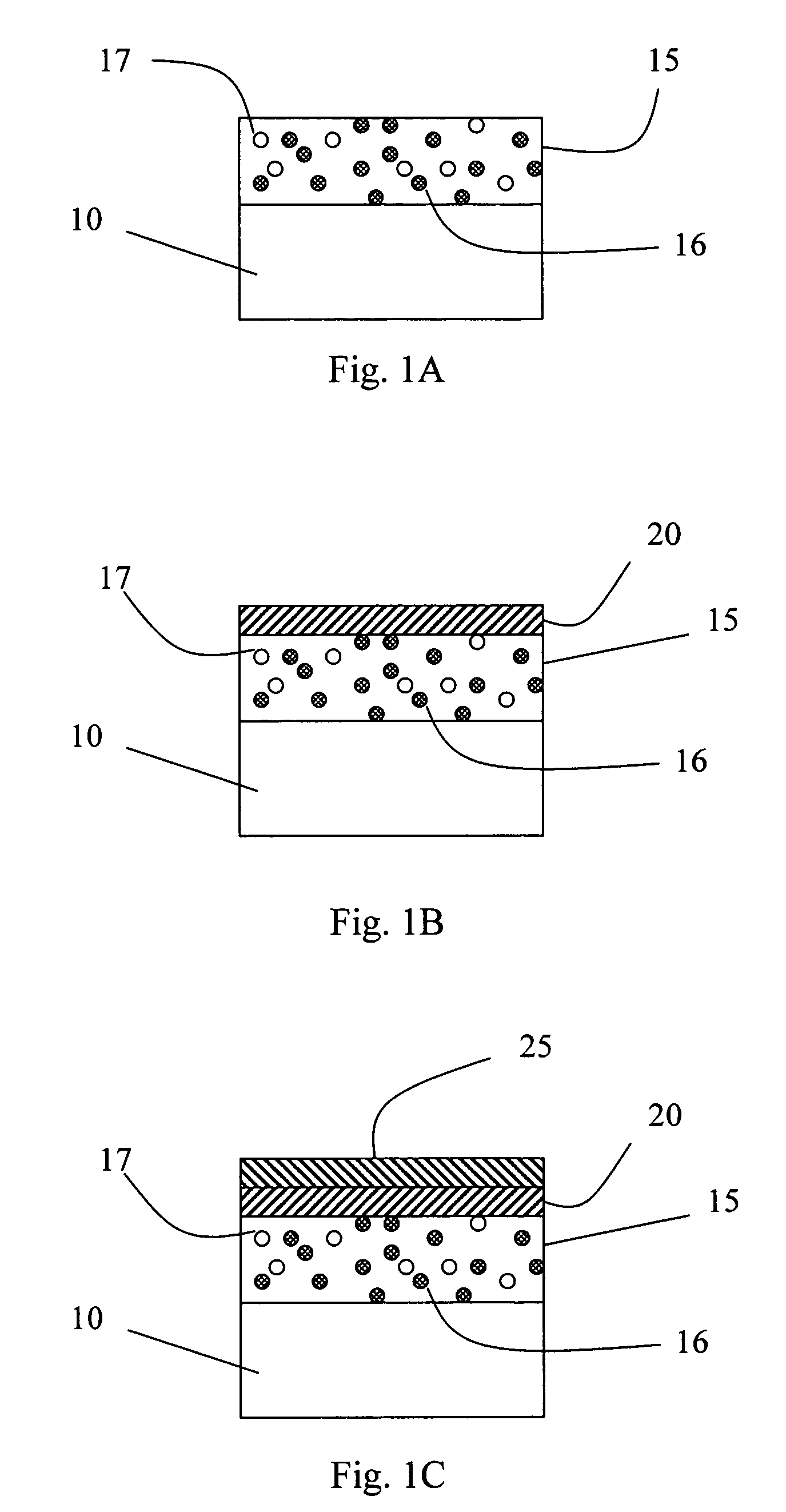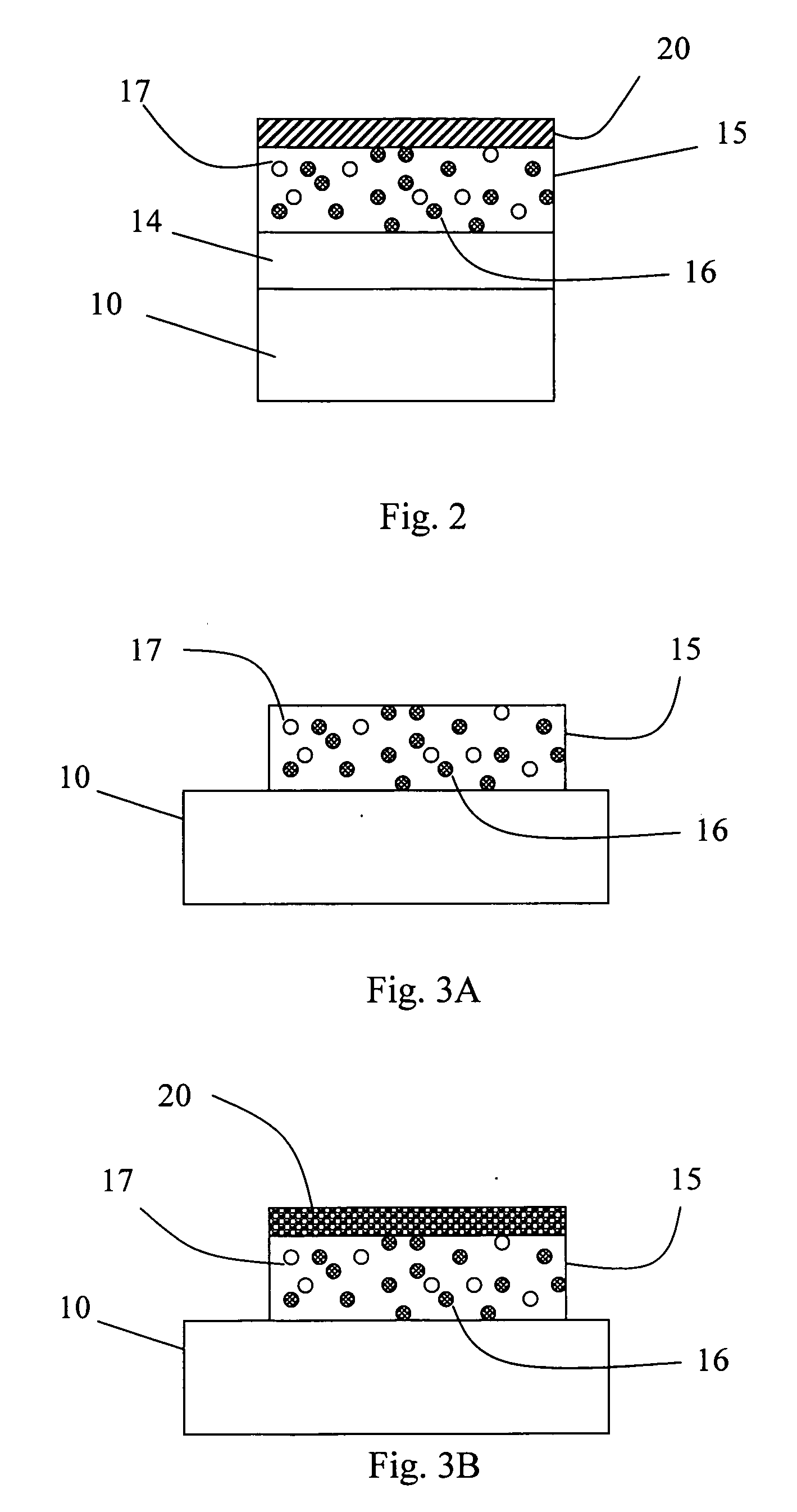Plating method
a metal film and plating technology, applied in the direction of dielectric characteristics, coatings, liquid/solution decomposition chemical coatings, etc., can solve the problems of limiting the applicability of this technique, difficult deposition of metal films, and limiting the applicability of metal film deposition
- Summary
- Abstract
- Description
- Claims
- Application Information
AI Technical Summary
Problems solved by technology
Method used
Image
Examples
example 1
[0067] A 10 cm×10 cm glass substrate was cleaned as follows: contacting with isopropanol at 20° C. for 5 min., rinsing with cold water at 20° C. for 5 min., contacting with a 1% w / w solution of tetramethyl ammonium hydroxide in water at 50° for 5 min., rinsing with cold water at 20° C. for 4 min., and drying with compressed air and in an oven (120° C. for 10 min.).
[0068] An underlayer composition was prepared containing 6 wt % of phenyl-methyl silsesquioxane oligomer having the general formula (C6H5SiO1.5)(CH3SiO1.5), 0.5 wt % of a siloxane containing surfactant, the balance being propylene glycol monomethyl ether acetate.
[0069] An adhesion promoting composition was prepared containing 1 wt % of phenyl-methyl silsesquioxane oligomer having the general formula (C6H5SiO1.5)(CH3SiO1.5), 0.5 wt % of a siloxane containing surfactant, 20 g / L of palladium acetate as a plating catalyst, and 20 wt % of a porogen including as polymerized units methoxy-capped polypropylene oxide methacrylate...
example 2
[0072] The nickel plated sample from Example 1 was contacted with a commercially available electrolytic copper plating bath (EP 1100, available from Rohm and Haas Electronic Materials) using recommended plating conditions. After 2 minutes, the sample was removed from the plating bath and dried in air. A layer of copper (approximately 125 nm thick) was deposited on the electroless nickel layer.
example 3
[0073] The process of Example 1 was repeated. The electroless nickel plated sample was then contacted with a commercially available electroless copper plating bath (CIRCUPOSIT 880, available from Rohm and Haas Electronic Materials) using recommended plating conditions. Copper was deposited on the nickel layer at a rate of 8-12 nm / min. After removal from the plating bath, the sample was dried at 110° C. for 10 minutes and then annealed at 120° C. for 60 minutes. The sample contained a layer of electroless copper deposited on the layer of electroless nickel.
PUM
| Property | Measurement | Unit |
|---|---|---|
| Fraction | aaaaa | aaaaa |
| Fraction | aaaaa | aaaaa |
| Fraction | aaaaa | aaaaa |
Abstract
Description
Claims
Application Information
 Login to View More
Login to View More - R&D
- Intellectual Property
- Life Sciences
- Materials
- Tech Scout
- Unparalleled Data Quality
- Higher Quality Content
- 60% Fewer Hallucinations
Browse by: Latest US Patents, China's latest patents, Technical Efficacy Thesaurus, Application Domain, Technology Topic, Popular Technical Reports.
© 2025 PatSnap. All rights reserved.Legal|Privacy policy|Modern Slavery Act Transparency Statement|Sitemap|About US| Contact US: help@patsnap.com



